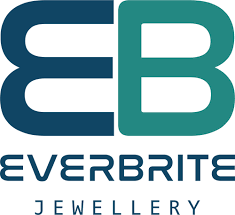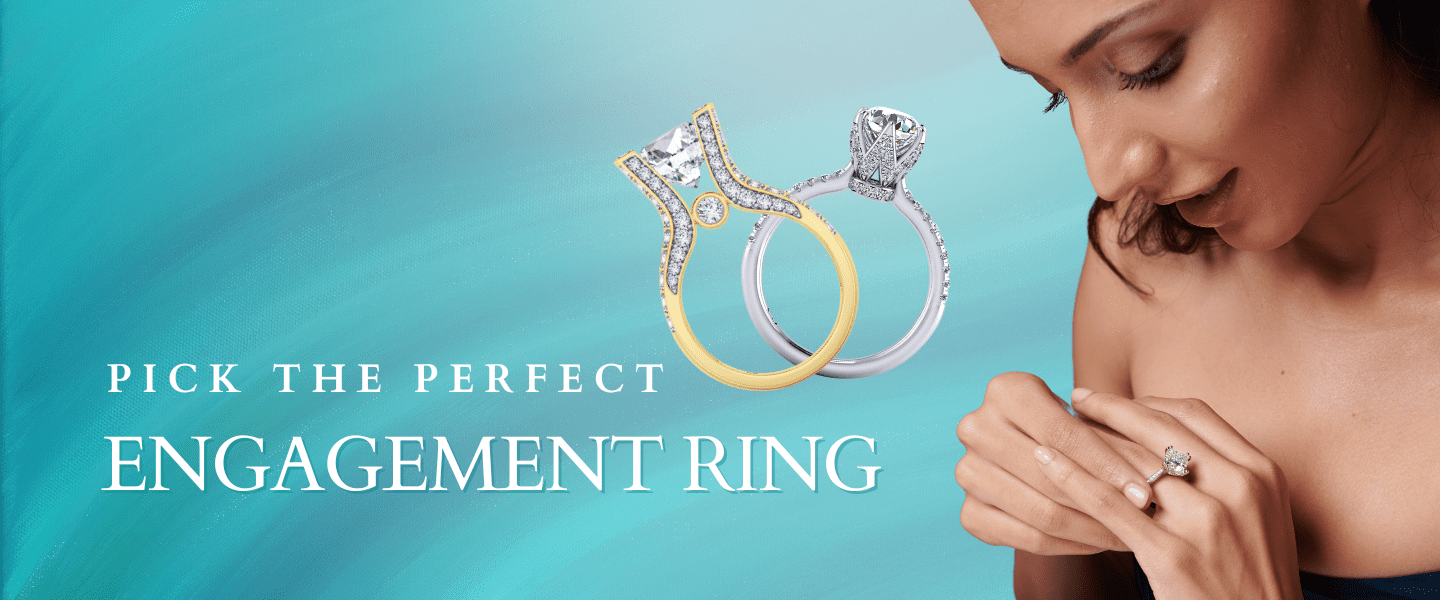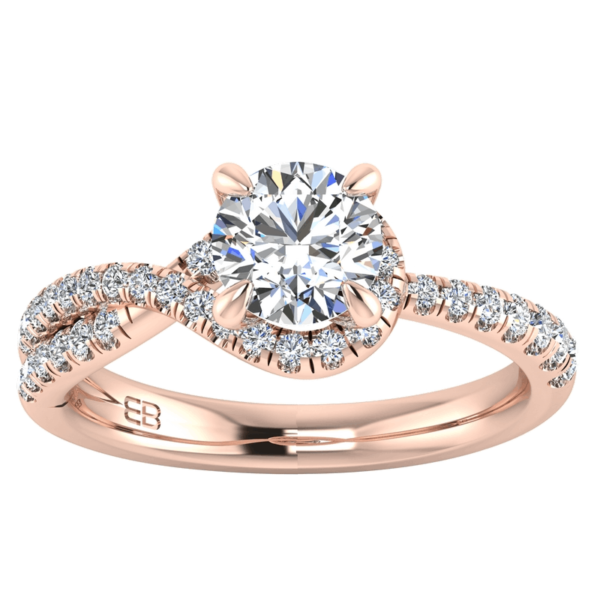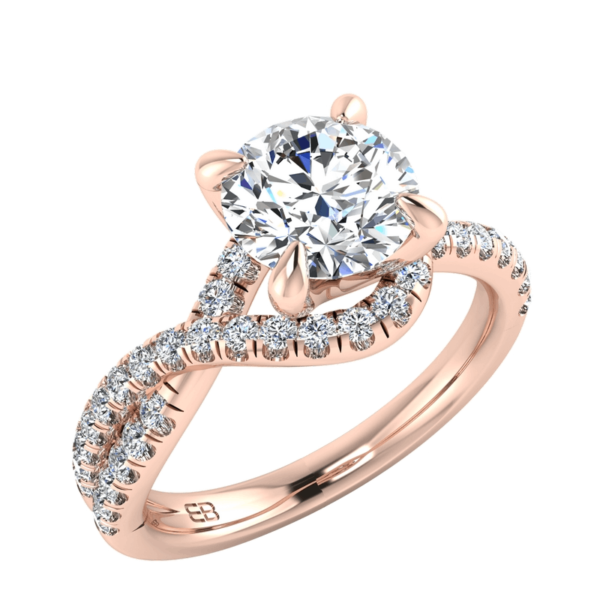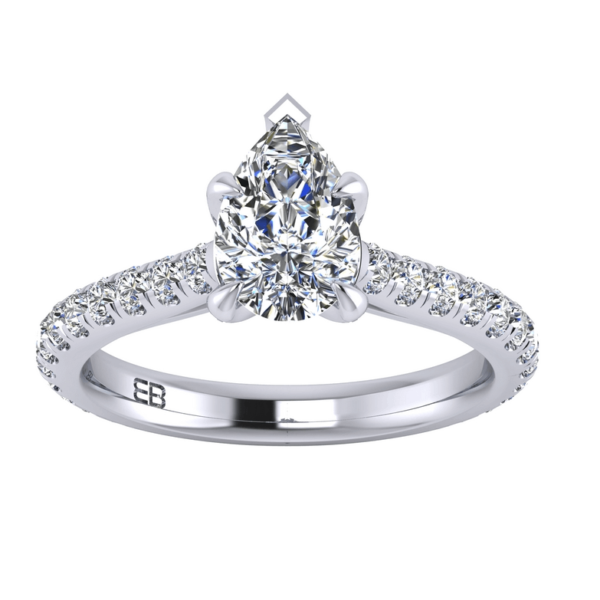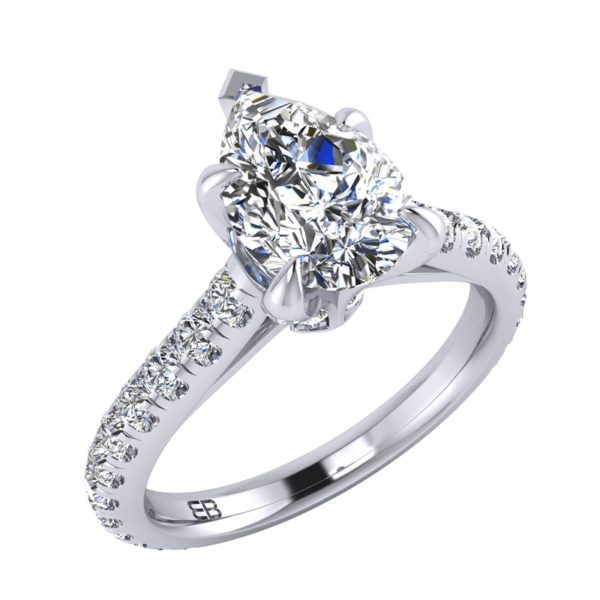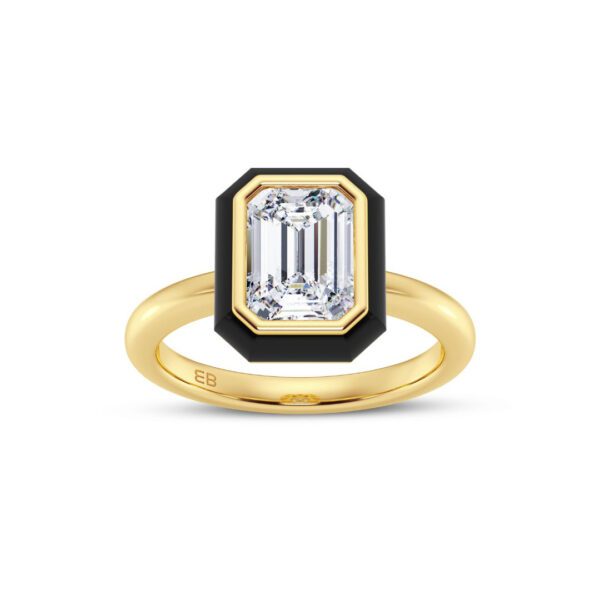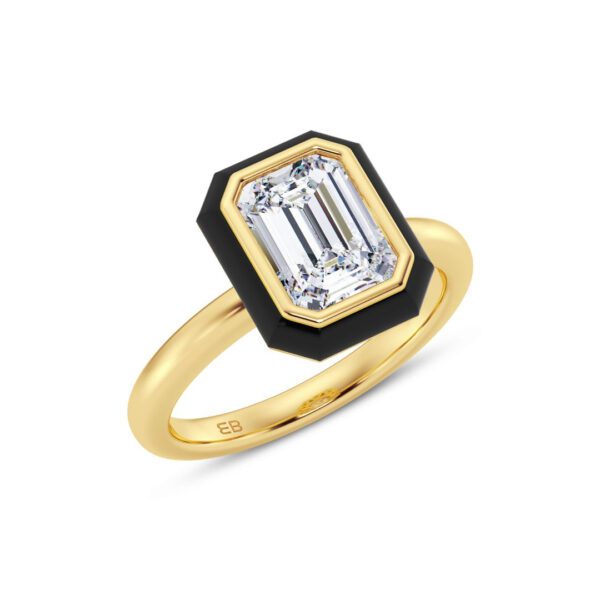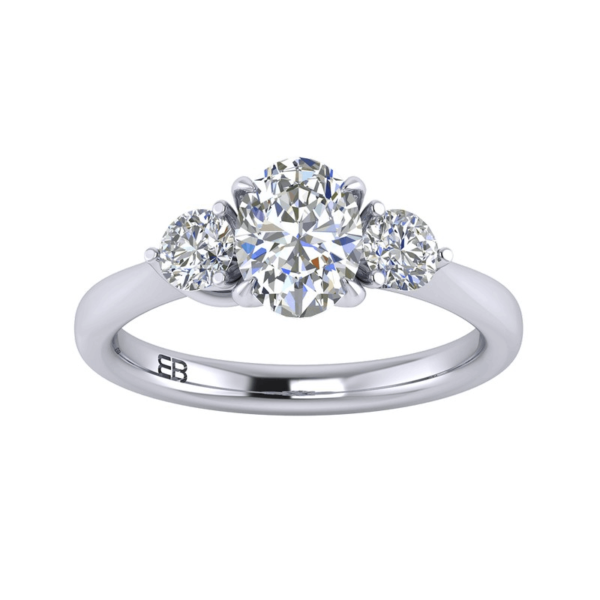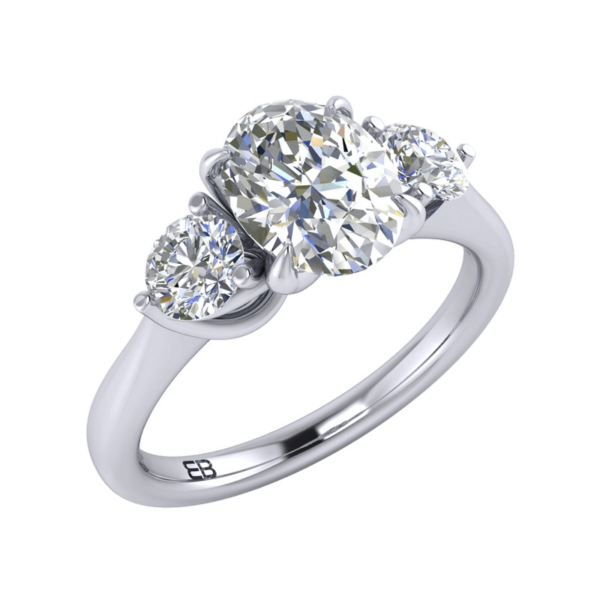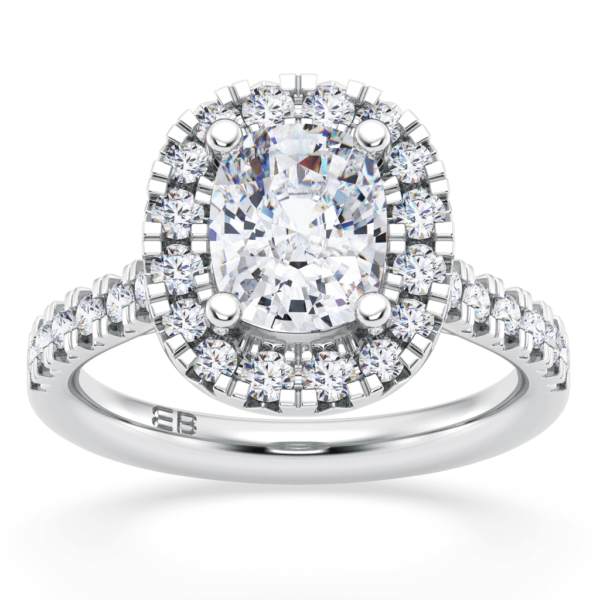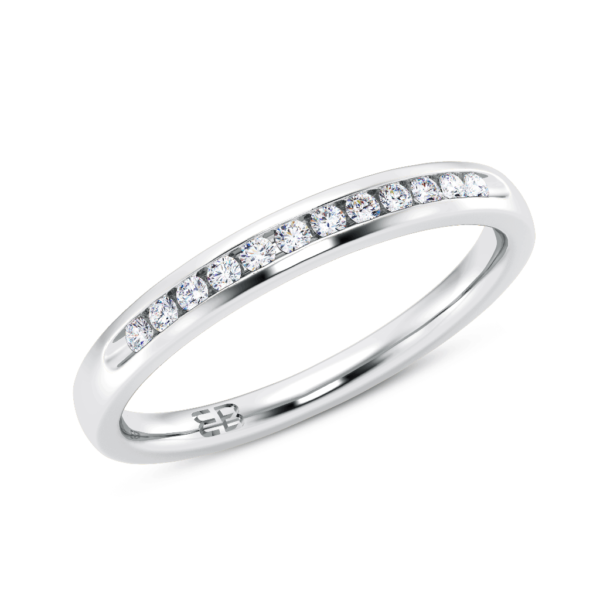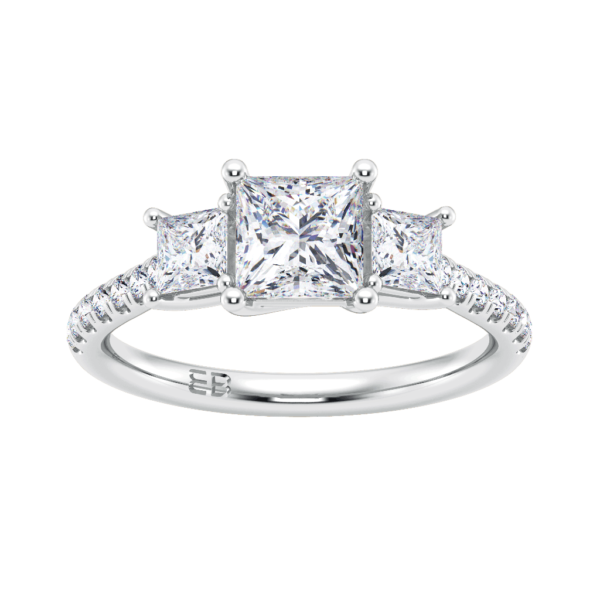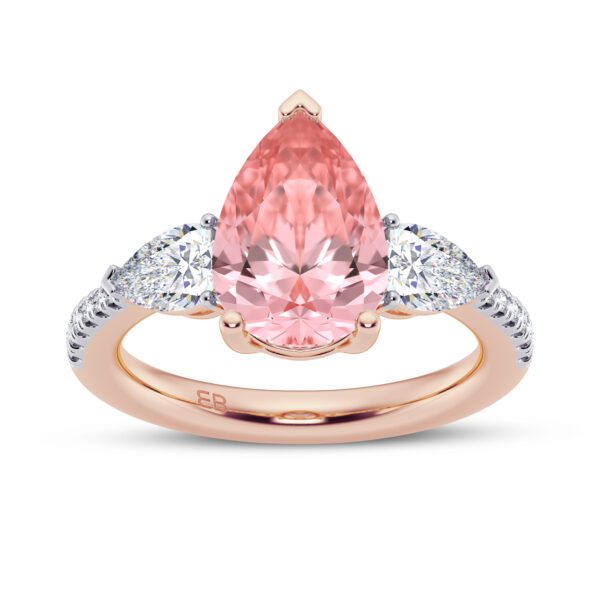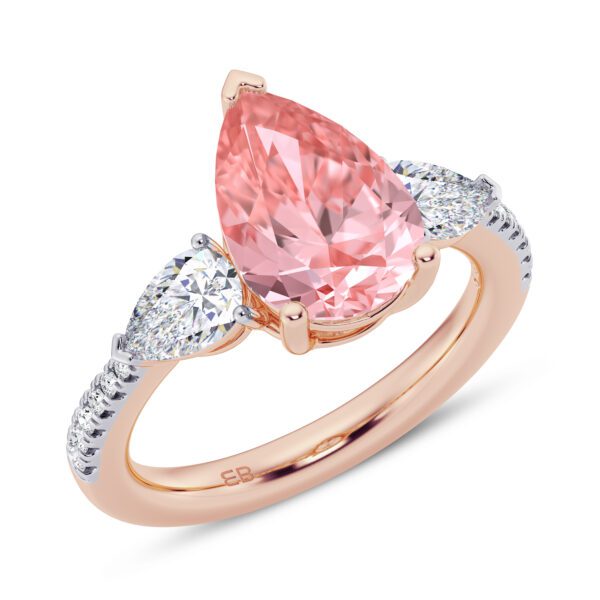We’ve got the functional, and the fun aspects covered
You can’t choose who you fall in love with. When it comes to love, the heart guides you more than practical considerations. Even if you have a checklist for what you want from the perfect partner, you’ll settle for someone that comes close, because you love them. Or fall in love with someone wildly different from what you envisioned for yourself. But engagement rings, now those, you can choose. And you should choose wisely. They’re symbolic of your relationship and your first-ever engagement ring (assuming you get upgrades as decades pass, wink, wink) is an omnipresent nostalgia button to take you back to the good old days of your romance.
In my case, it’s a heady and vital reminder that I actually love and cherish the usually-thoughtful husband getting on my nerves as he sits on the couch while I ask him to do things (But that’s a story for another day).
Of course, we’re here to make a case for choosing a lab-grown diamond engagement ring because it’s an eco-friendlier, and more affordable option.
When it comes to lab-grown diamond engagement rings in India, no one does it like Everbrite Jewellery, the epitome of affordable luxury — just ask their happy customers. Preeta Panthaki was all praise, “We had the best experience with Everbrite. We got an absolutely beautiful engagement ring at an affordable price. We will definitely be visiting again and making more purchases.” Akhil Jacob called out a special team member, “Vidhi helped make shopping for an engagement ring super easy and informative.”
Now, whether you’d like to jump on the Everbrite bandwagon or want to go through the process yourself, we’ve created the most extensive guide ever to ensure you make an informed decision. Whether you’re a man finding the perfect ring for his partner, or both partners are in it together, we present 11 tips to ensure you choose perfectly.
7 practical considerations for picking the perfect lab-grown diamond engagement ring
1. Budget: Let’s be honest, your love may be bottomless (or endless if you’d like a more romantic rubric), but the same likely can’t be said for your bank account. Even if money is no object, a budget is a great starting place when it comes to precious jewellery shopping. Bear in mind, a mined diamond engagement ring with the same characteristics is far more expensive than a lab-grown diamond engagement ring.
Lab-grown diamonds are as sparkly, precious, and budget-friendly due to lack of mining costs. Share how much you’re willing to spend up-front and your jeweller will suggest suitable designs.
2. Ring size: Whoever says size doesn’t matter hasn’t met a teary-eyed woman at her proposal unable to fit her new engagement ring onto her finger (or one who struggles not to lose it because it’s just that loose). Steal a ring that fits perfectly, or if you two are in cahoots and planning the ring, take a ring sizer (Everbrite Jewellery’s website has an easy ring size at-home guide) and ensure you get the correct size before you pick an off-the-rack design, or take a leaf out of Darshan’s book who secretly got his girlfriends’ ring size and commission a lab-grown diamond engagement ring:
3. The diamond: Learn the 4cs of diamonds. Cut, colour, clarity and carat are the globally accepted standards for assessing diamond quality and the cost of a diamond is predominantly based on these categories. We don’t expect you to know your way around a refractometer but, here are the basics you must take a good hard look at so you know what questions to ask your jeweller.
Cut: According to the International Gem Society, the cut is a measure of how well a diamond reflects light. It’s a technical assessment, and reflects the diamond’s facets, symmetry, dimensions, and reflective qualities, influencing its brilliance. The finer the cut, the greater the brilliance. A diamond cut grade can be anything from ideal to poor.
Colour: This is judged on a D-Z scale, D signifies a colourless diamond, whereas Z denotes a brown/yellow hue.
Clarity: This marks the blemishes and inclusions in a diamond.
Carat: The higher the carat weight, usually, the more expensive the diamond (keeping in mind the other C’s).
Get a diamond certification. Labs like International Gemological Institute (IGI) certify mined diamonds and LGDs using the same parameters, with a verification that they were grown in a lab.
Bonus tip: Do check for the tinge/undertone (yellow/brown/blue/green) in the diamond – while not mentioned on the certificate, it’s important to get a tinge-free diamond, as the presence of a tinge affects the overall luster and fire of the diamond. After all, you know she’ll love to show it off:
4. Metal type: Precious, precious gold (in 18kt/14kt) is a popular, timeless choice for lab-grown diamond engagement rings, whether it’s polished yellow, white, or rose, as is platinum. Silver is less popular but also an option. In recent times, non-precious metals like titanium and steel have grown in popularity for those who want durable, and hardy engagement rings (for men, mostly) but they’re not a traditional choice.
5. Source of the ring: DDLJ fan who for Simran’s line about how the ring finger has a “nass” that goes directly to the heart? (untrue, sorry)! Or just want to show the world you’re taken? Either way, engagement rings are important and so is where they’re coming from.
Decide whether you’d like to splurge on a thoughtful custom design, pick an off-the-rack ring that matches her personality, opt for a history-imbued vintage ring or dig into the family jewels for a sentimental heirloom piece. Check this classic with a twist – both in design and literally, as it has something special hidden inside!
6. Exchange policies and jewellery insurance: Always read the offer document carefully before investing — we’ve heard this line in fast-forward after every mutual fund investment ad, on TV, and radio, but it’s the cornerstone of buying precious jewellery.
Read the fine print to ensure you don’t get stuck with a piece that doesn’t fit, or look like what you picked. And of course, get that sparkler insured. At Everbrite Jewellery, we can help you upgrade the design for a milestone occasion — for instance, transforming a 1-ct lab-grown diamond engagement ring from us, into a 2-ct fifth anniversary sparkler. All you have to do is pay the price difference.
7. Quality of the piece: Check the karat of the precious metals to ensure that the jewellery is hallmarked.
4 aesthetic considerations to choose the ring of your (her) dreams: aka all about the lewks
1. Personal style: Sex and the City siren Samantha Jones famously said, “Wrong ring, wrong guy” when it came to Carrie and Aidan. And while that isn’t necessarily true, we wouldn’t want the right guy to hand the right girl the wrong ring, right? So, if the proposal is a surprise, fiancé-to-be should be mega sure of his beloved’s personal style (antique, modern, art-deco, bohemian, classic — the list and descriptors are endless). The only tip we have for you is that personal style is timeless, while trends come and go.
Everbrite also has a range of men’s diamond rings in case the lady is proposing. Take a look at Dr. Smruti and Nishit’s picks:
Don’t forget to ask for a free engraving on the ring – a meaningful date, or your catchphrase: it’s a special touch she’ll adore!
2. The ring setting: If the only setting you’re familiar with is the classic Indian jugaad, we suggest you get acquainted with ring settings so your fiancée’s lab-grown diamond engagement ring is set for success. Some common, popular settings are:
Prong: Here, a tiny metal claw aka the prong, clutches the solitaire, holding it in place like in Everbrite’s Pear-fect Match Engagement Ring.
Bezel: Here, the solitaire is encircled by the metal, protecting the diamond like this ring.
Three-stone: A centre stone, flanked by two smaller ones on either side like this one.
Cluster: A group of small diamonds set closely together to give the illusion of a larger solitaire.
Halo: A single diamond is surrounded by small diamonds, like the Cushion Halo Engagement ring — because bling is king, right?
Channel: This setting is more popular for the wedding band, as it involves tiny diamonds all over the band, like our Subtelty Half Eternity ring.
If you want to buy the engagement ring and wedding band together, read about band styles to pick a complementing pair. Band types include channel bands, pave bands, bezel set bands, braided bands and more. This is another factor that custom jewellers like Everbrite can guide you with. Here’s what clients Dayesh and Elishka picked:
3. The shape of the stone: The shape is the outline of the diamond when seen face up — it refers to its geometric appearance. There are two major categories of popular diamond shapes: round diamonds and fancy-shaped diamonds — the former is the most popular and traditional, so, is in its own category. Fancy-shaped diamonds include princess, emerald, radiant, cushion, oval, marquise, pear, heart and asscher — read all about these, and find the right one for you in our guide to diamond shapes.
4. Side stones: Now that you’ve checked off the logistics, decided the shape of your ring, and familiarised yourself with the design style, comes the final question — are you enhancing your lab-grown solitaire engagement ring with more clear lab-diamonds on the shank like in Everbrite’s Enchant Princess Engagement Ring or going all out with a 3-stone lab-diamond engagement ring featuring a stunning baby pink solitaire and two complementing side stones, like this one?
If you’re buying this engagement ring online, or dealing with an online merchant to design a custom sparkler, read “8 Precious Jewellery Shopping Mistakes You’re Making — And How To Avoid Them” before you add to cart. Make sure you get in touch with Everbrite Jewellery to make a virtual appointment or visit them at their Opera House, Mumbai boutique to see their designs in real life.
